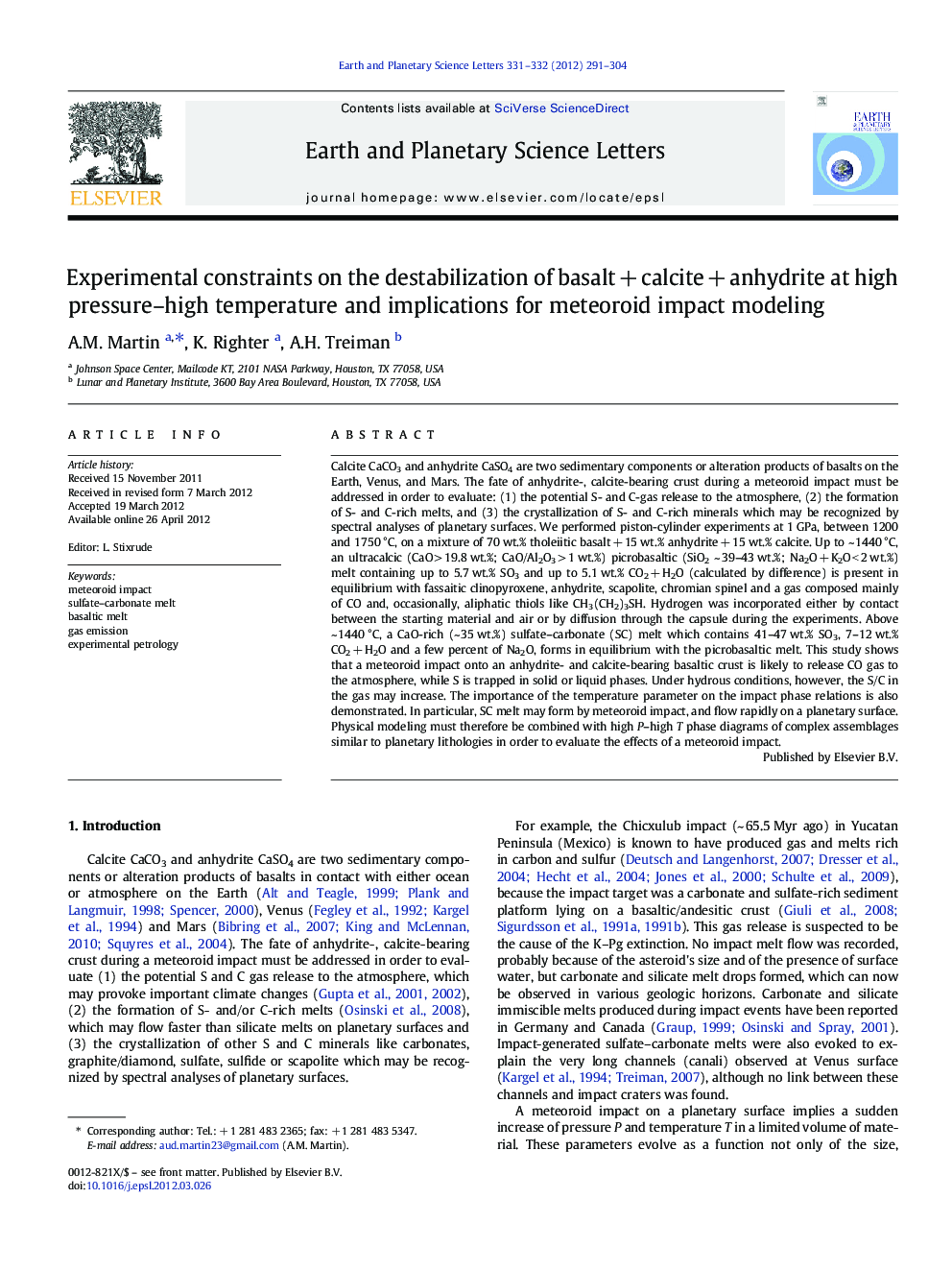| Article ID | Journal | Published Year | Pages | File Type |
|---|---|---|---|---|
| 4677493 | Earth and Planetary Science Letters | 2012 | 14 Pages |
Calcite CaCO3 and anhydrite CaSO4 are two sedimentary components or alteration products of basalts on the Earth, Venus, and Mars. The fate of anhydrite-, calcite-bearing crust during a meteoroid impact must be addressed in order to evaluate: (1) the potential S- and C-gas release to the atmosphere, (2) the formation of S- and C-rich melts, and (3) the crystallization of S- and C-rich minerals which may be recognized by spectral analyses of planetary surfaces. We performed piston-cylinder experiments at 1 GPa, between 1200 and 1750 °C, on a mixture of 70 wt.% tholeiitic basalt + 15 wt.% anhydrite + 15 wt.% calcite. Up to ~ 1440 °C, an ultracalcic (CaO > 19.8 wt.%; CaO/Al2O3 > 1 wt.%) picrobasaltic (SiO2 ~ 39–43 wt.%; Na2O + K2O < 2 wt.%) melt containing up to 5.7 wt.% SO3 and up to 5.1 wt.% CO2 + H2O (calculated by difference) is present in equilibrium with fassaitic clinopyroxene, anhydrite, scapolite, chromian spinel and a gas composed mainly of CO and, occasionally, aliphatic thiols like CH3(CH2)3SH. Hydrogen was incorporated either by contact between the starting material and air or by diffusion through the capsule during the experiments. Above ~ 1440 °C, a CaO-rich (~ 35 wt.%) sulfate–carbonate (SC) melt which contains 41–47 wt.% SO3, 7–12 wt.% CO2 + H2O and a few percent of Na2O, forms in equilibrium with the picrobasaltic melt. This study shows that a meteoroid impact onto an anhydrite- and calcite-bearing basaltic crust is likely to release CO gas to the atmosphere, while S is trapped in solid or liquid phases. Under hydrous conditions, however, the S/C in the gas may increase. The importance of the temperature parameter on the impact phase relations is also demonstrated. In particular, SC melt may form by meteoroid impact, and flow rapidly on a planetary surface. Physical modeling must therefore be combined with high P–high T phase diagrams of complex assemblages similar to planetary lithologies in order to evaluate the effects of a meteoroid impact.
► Meteoroid impact on planetary surfaces can provoke surficial melting and degassing. ► We performed high pressure–high temperature experiments on the basalt + anhydrite + calcite system. ► CO is degassed but S is trapped in solid / liquid phases. ► The presence of H increases the S/C ratio in the gas. ► Immiscibility between a sulfate-carbonate melt and a silicate melt is observed.
